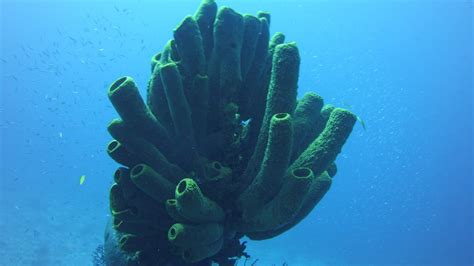Introduction

In the vast tapestry of life on Earth, specialist species stand out as extraordinary examples of evolutionary adaptation. These organisms have evolved a unique set of traits that enable them to thrive in specific ecological niches, often with staggering results. Among the countless examples of specialist species, the sea sponge stands as a captivating subject that showcases the remarkable power of specialization.
Sea Sponges: Masters of Filtration
Sea sponges are sedentary filter feeders that inhabit a wide range of marine environments, from shallow tropical waters to deep-sea hydrothermal vents. Their unique anatomy is perfectly adapted for extracting food from the currents that flow through their bodies.
Specialized Feeding Adaptations
-
Collar Cells: The inner walls of sponge bodies are lined with specialized collar cells. Each collar cell has a flagellum that creates water currents, drawing in particles of organic matter from the surrounding water column.
-
Choanocytes: These flagellated cells filter the water, capturing food particles and directing them to the sponge’s digestive system.
-
Sponge Skeleton: The sponge’s skeleton, composed of microscopic spicules or flexible fibers, provides support and facilitates the flow of water through the organism.
Benefits of Specialization
The sea sponge’s specialization in filter feeding offers several key benefits:
-
Efficient Nutrient Extraction: By utilizing collar cells and choanocytes, sea sponges can extract food particles from the water column with remarkable efficiency.
-
Protection from Predators: The sponge’s sessile nature and tough skeleton provide protection from predators that might otherwise prey on planktonic organisms.
-
Extensive Food Sources: The ocean’s currents carry a constant supply of food to filter feeders like sea sponges, ensuring a reliable source of nourishment.
Ecosystem Impact of Specialist Species
Specialist species like sea sponges play a crucial role in marine ecosystems.
-
Nutrient Cycling: By filtering large amounts of water, sea sponges help remove excess nutrients from the ecosystem, preventing eutrophication and supporting overall water quality.
-
Habitat Provision: Sea sponge colonies create complex three-dimensional structures that provide a haven for a variety of other marine organisms, enhancing biodiversity and ecosystem resilience.
-
Trophic Level: Sea sponges occupy a middle trophic level, consuming primary producers (e.g., phytoplankton) and supporting predators (e.g., fish) in the food chain.
Examples of Specialist Adaptations in Other Organisms
Sea sponges are just one example of the remarkable adaptations that specialist species have evolved to thrive in specific environments. Other examples include:
-
Venus Flytrap: This carnivorous plant traps insects with its specialized leaf structure, providing nutrients not found in the soil.
-
Polar Bear: This Arctic predator possesses a thick fur coat, blubber layer, and unique hunting techniques for survival in extreme cold environments.
-
Giant Anteater: The giant anteater’s long, sticky tongue allows it to capture ants and termites with incredible efficiency, compensating for its limited dental development.
Tips for Identifying Specialist Species
-
Examine the organism’s physical adaptations, noting any unusual features or structures.
-
Study its feeding habits and habitat preferences to identify its specific ecological niche.
-
Consider the organism’s competition with other species and its role in the ecosystem.
Common Mistakes to Avoid
-
Assuming All Species Adapt as Specialists: Not all organisms are specialist species. Many species exhibit generalist traits that enable them to exploit a wider range of resources.
-
Overestimating Specialization: While specialist species have evolved unique adaptations, they may still face competition or predation within their niche.
-
Underestimating the Impact of Disturbances: Specialist species are often vulnerable to environmental changes or disturbances that affect their specific ecological requirements.
Steps for Studying Specialist Species
-
Hypothesis Formulation: Develop specific predictions about the organism’s adaptations and ecological role based on its appearance and habitat.
-
Data Collection: Conduct field observations, laboratory experiments, or molecular analysis to gather data on the organism’s morphology, feeding habits, and ecosystem impact.
-
Data Analysis: Interpret the data and test the hypotheses.
-
Scientific Communication: Share the study results through publications, conferences, or public engagement to enhance our understanding of specialist species.
Conclusion
Specialist species like sea sponges are fascinating examples of how organisms have evolved to exploit specific ecological niches. Their unique adaptations provide them with remarkable advantages in nutrient extraction, protection from predators, and food availability. By studying specialist species, we gain insights into the incredible diversity and resilience of life on Earth. Their specialized adaptations also inspire innovative applications in fields such as water filtration and biomimetics. As we continue to explore the intricacies of the natural world, the study of specialist species will continue to provide invaluable lessons about the power of evolution and the delicate balance of ecosystems.
